by Amineddoleh & Associates LLC | Dec 14, 2022 |
In this annual newsletter, Amineddoleh & Associates is pleased to share some major developments that took place at the firm and in the art world during 2022.
LITIGATION AND SETTLEMENT UPDATES
The “Goodwill” Marble Bust

The Marble Bust looted during WWII that was found in Texas and will be returned to Germany
Possibly the most talked about art law matter of the year was the return of an ancient marble bust to Germany. The 2,000-year-old artifact likely originated from Rome, but it was acquired by Bavarian King Ludwig I and then placed in a German museum from where it was looted during World War II. Our client, Laura Young, bought it at a local goodwill shop and ultimately returned it to Germany. It was an honor to advise her and work with her to negotiate the internationally celebrated return.
Copyright Infringement Lawsuit
At the start of the year, we filed a litigation in Iowa on behalf of a muralist, Chris Williams. His work was featured in an advertisement that aired during the Super Bowl. We are currently representing him in a lawsuit for copyright and a violation of his moral rights on the Visual Artists Rights Act.
ART & IP NEWS
One of our favorite things about the art market is that there is always something exciting happening in the art world. Some of our most popular blog posts from this year are found below.
Celebrities and Fossil Collecting
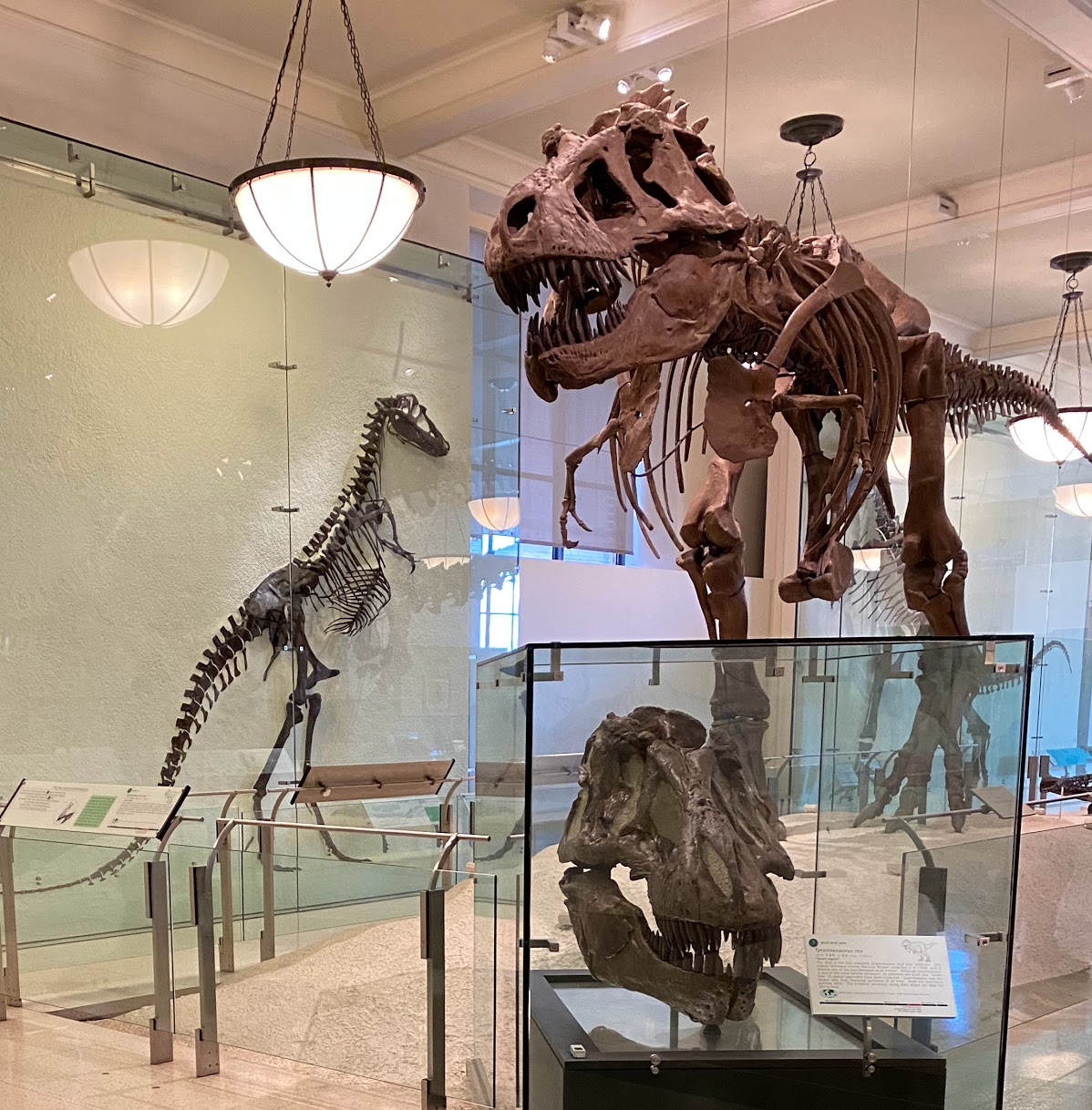
Skeletons in the American Museum of Natural History
In this blog post, our firm examined legal matters involving dinosaur fossils and skeletons, including purchases made by Nicolas Cage, Leonardo DiCaprio, and The Rock. Auction houses have faced growing interest in buyers seeking dinosaur bones. The sales have gotten a lot of attention, perhaps due to the trend of major celebrities making large, public bids for the pieces. As a result of the publicity, countries around the world from which fossils are illegally excavated have presented auction houses with ownership claims, based on their country’s property laws. Copyright law was also an issue for auction houses selling dinosaur skeletons this year because skeletons that are partly comprised of replica bones may come with intellectual property rights in the manufactured pieces.
Fashion Law and Protecting Brands
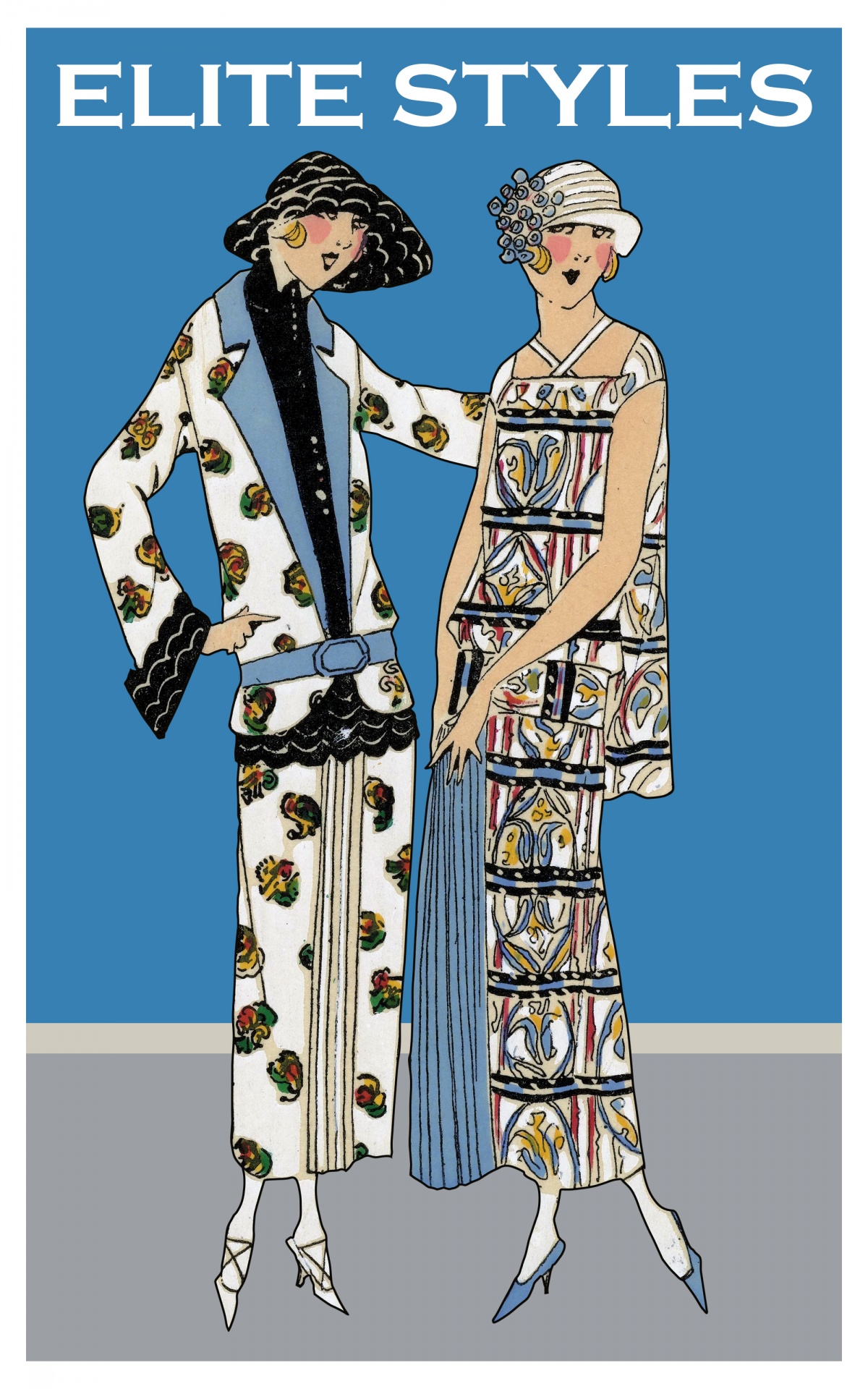 When does the law protect fashion brands? And what is the cost to other artists? Our firm answered these questions in this posts inspired by the Fall 2022 Fashion Weeks taking place around the world. Prominent fashion designers have been known to incorporate logos of other brands into their designs, often as a part of social commentary. Even where artistry is the intent behind the repurposed logo, these designers face financially devastating intellectual property claims from major the brands and companies who own the rights to the logo. Our firm considered how to balance protecting consumers from consumer confusion with giving designers the artistic liberty to create fashion that sparks social commentary. Read more on our website.
When does the law protect fashion brands? And what is the cost to other artists? Our firm answered these questions in this posts inspired by the Fall 2022 Fashion Weeks taking place around the world. Prominent fashion designers have been known to incorporate logos of other brands into their designs, often as a part of social commentary. Even where artistry is the intent behind the repurposed logo, these designers face financially devastating intellectual property claims from major the brands and companies who own the rights to the logo. Our firm considered how to balance protecting consumers from consumer confusion with giving designers the artistic liberty to create fashion that sparks social commentary. Read more on our website.
New York Raises Holocaust Awareness Through New Law
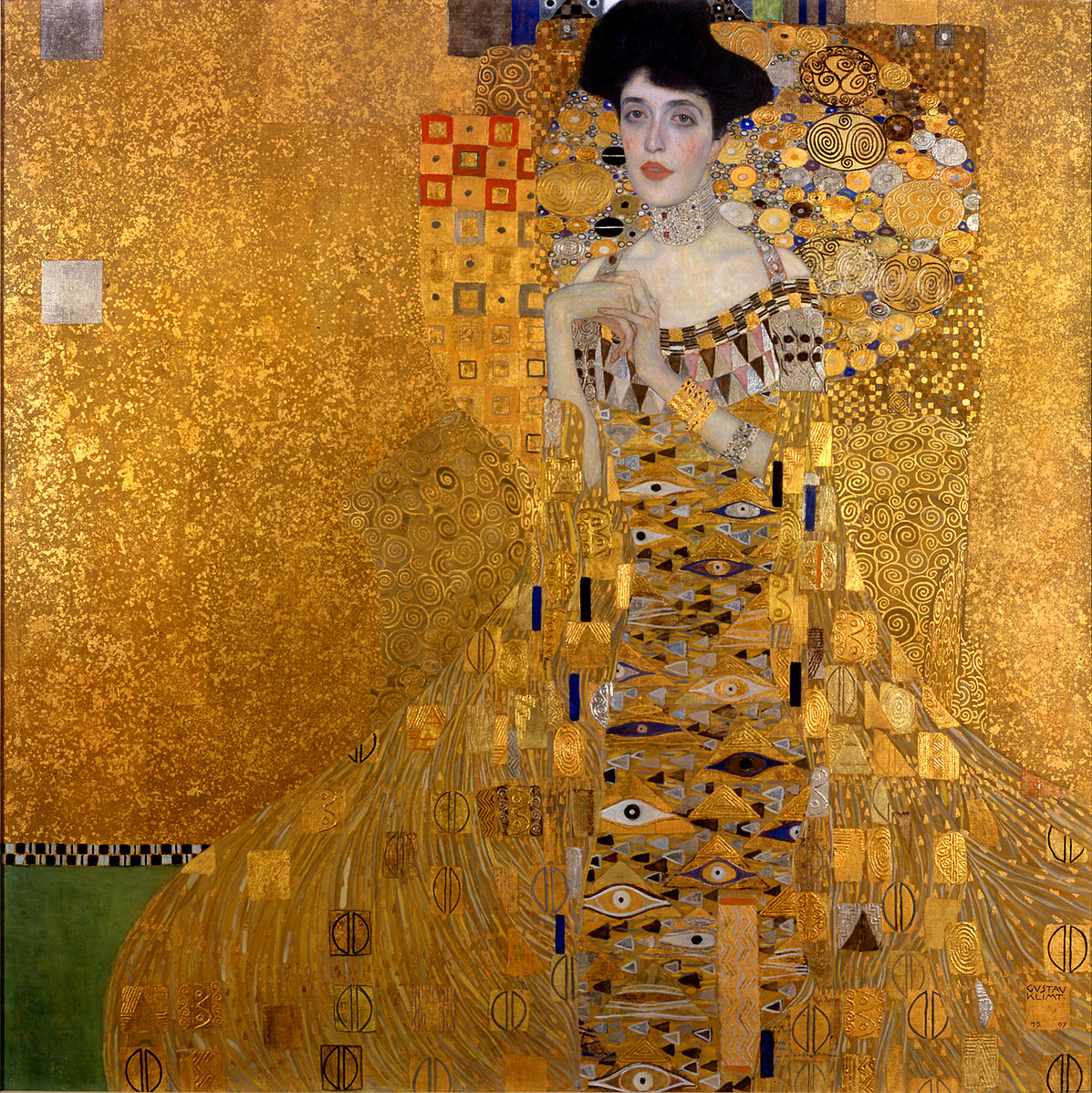
Gustav Klimt’s Woman in Gold
New York State now requires museums to post which artworks on display have links to the Holocaust. The New York bill, which was signed into law on August 10, 2022, accompanied two other Holocaust related bills aimed to combat rising reports of antisemitism. Our firm revisited the difficulty of proving provenance for items acquired during the Holocaust and shortly following WWII. The restitution of these works to families from which the pieces were stolen is incredibly healing.Unfortunately, such claims for the return of priceless works of art often have to overcome enormous legal hurdles, such as the difficulty of proving provenance in court and FSIA claims brought by countries who now claim possession. Read more on our website.
LAW FIRM UPDATES AND EVENTS
New Team Members
Our firm welcomed two new members to join our team, Yelena Ambartsumian and Maria Cannon. Yelena joins the firm as Counsel, while Maria joins us as an associate. We are proud to have Yelena and Maria as members of our team, and we wish them both a warm welcome.
Firm Founder Listed by Chambers
This year, firm founder Leila A. Amineddoleh was recognized by Chambers and Partners High Net Worth Guide for her work in Art and Cultural Property Law. The publication named Leila “a brilliant attorney,” and “a go-to for cultural property matters.” The publication also remarked on her passion for art law and her wealth of experience in the field. Read more here.
Art Law Conferences
Congratulations to our firm’s founder Leila A. Amineddoleh, who successfully chaired the 14th Annual NYCLA Art Law Institute, one of the most anticipated events of the year. Earlier in the year, in March, Leila presented the keynote speech at Yale University’s conference “Dura-Europos: Past, Present, and Future.” The conference focused on the systematic looting of Dura-Europos that took place during the Syrian civil war and during prior millennia. Leila presented on the history of cultural heritage looting and modern efforts to prevent such plunder. Read more about the conference here.
Leila was also a speaker at the Salmagundi Club, one of the oldest arts organizations in the U.S. Her other speaking engagements included moderating a panel for Art Appraisers’ Association Art Law Day and for Fordham’s Intellectual Property Law Journal’s 30th Annual Symposium, “Duplicate, Decolonize, Destroy: Current Topics in Art and Cultural Heritage Law.” In addition, she spoke at conferences hosted by Cardozo School of Law and Notre Dame School of Law. At Cardozo School of Law, Leila spoke on a panel at a symposium discussing cultural property ownership. Read more here. At Notre Dame’s Journal of International and Comparative Law Symposium, she served as panelist at the symposium, “International and Comparative Approaches to Culture”, and discussed antiquities disputes and repatriation of cultural heritage.
Associate Claudia Quinones presented on the “What’s New in Art Law?” panel at the 14th Annual NYCLA Art Law Institute. Her presentation covered title and ownership disputes, new technologies, and climate change activism in the art world. Details about the conference can be found here.
Yelena’s speaking engagements included Fordham Law School’s 30th Annual Intellectual Property Law Journal Symposium as a panelist on “Erased: Protecting Cultural Heritage in Times of Armed Conflict.” She also was a panelist at American University of Armenia’s Center for Truth and Justice Inaugural International Conference, “Cultural Heritage at Stake: How to Preserve, Mitigate Damage, and Punish Destruction.” Read more about the conference here.
IN THE PRESS
Leila appeared in the New York Times a number of times this year, in addition to Artnet, The Art Newspaper, the Observer, the Washington Post, USA Today, People Magazine, and Town + Country Magazine. She discussed a variety of topics, including the art market, cultural heritage disputes, Nazi-looted art, intellectual property disputes, and art collecting practices. Leila also appeared on WPIX-NY and in a number of podcasts.
CLIENTS AND REPRESENTATIVE MATTERS
Sculpture Garden Commission at the Smithsonian Institution
We are very proud to have served as legal counsel to famed artist Hiroshi Sugimoto for a number of his commissions, including his highly anticipated sculpture garden at the Hirshhorn Museum, part of the Smithsonian Institution.
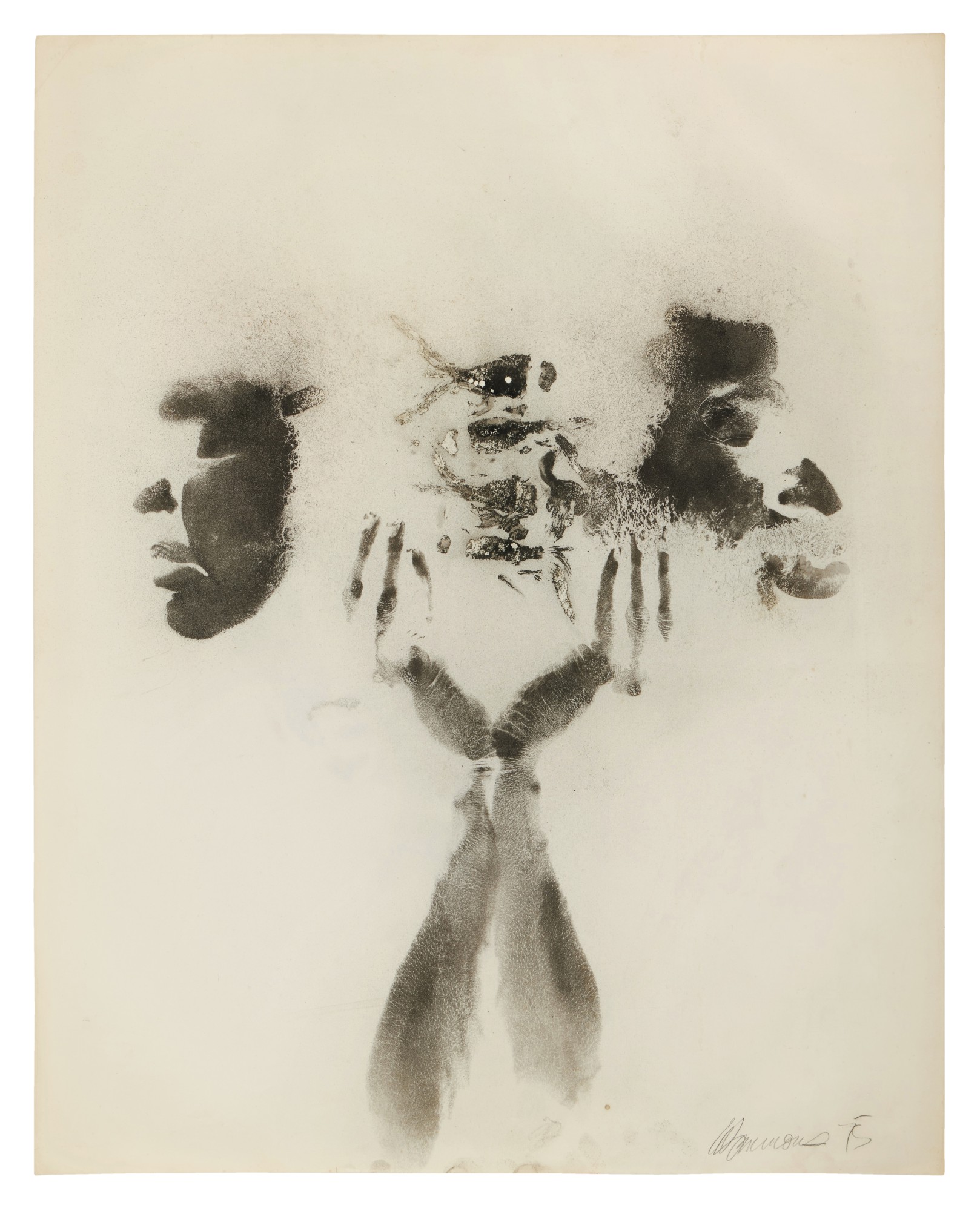 Auction Sales
Auction Sales
We worked with a number of clients to assist them with consigning art for sale at auction. One of our clients is the collecting family that consigned three works by David Hammons for the Sotheby’s Contemporary Evening Auction and one work at the Contemporary Curated sale earlier in the spring. Sotheby’s touted these works and their provenance, after the paintings remained with our clients for nearly five decades. All four of the works performed well, with two of them selling for above their high estimates.
Trademark Clients
We continue working with brands, artists, and companies by advising and serving as trademark prosecutors. Included among our clients are luxury watch brands, fragrance companies, and musicians, including multi-platinum songwriter and produced Jonas Jeberg.
Advising Art Market Players on New Platforms
While we often work with traditional art market participants (including artists, collectors, foundations, auction houses, museums, art advisors, and art experts), we are also happy to be at the forefront of the art and cultural world. As new art platforms and technologies develop, we are pleased to work with exciting online galleries, NFT platforms, novel art collecting exchanges, and artists exploring new media. We look forward to continue cutting edge work in the art sector.
On behalf of Amineddoleh & Associates, we wish you a happy and healthy holiday season and a wonderful and prosperous new year.
by Amineddoleh & Associates LLC | Dec 6, 2022 |

Skeletons in the American Museum of Natural History
In a surprising turn of events, during Thanksgiving Weekend, Christie’s withdrew a valuable Tyrannosaurus rex skeleton from its planned sale. The skeleton was once marketed on the famed auction house’s website as the crown jewel of its Hong Kong sales. But it was removed after a paleontologist revealed that the set of bones up for bid violated copyright protections of replica bones.
To better understand the paleontologist’s claim, it is important to learn a bit about dinosaur skeletons as they appear in museums and on the art market. It is common industry practice to include both original and cosmetic (replica) bones when displaying a dinosaur skeleton. This is because complete dinosaur skeletons are hard to come by and even properly excavated bones are not in pristine condition. This combination of plastic and authentic dino parts acts as the dinosaur’s Instagram filter while on display for her adoring crowd.
Intellectual property rights may be held in the structure of the replica bones. This is what gave rise to Christie’s public withdrawal of the item. A lawyer for the Black Hills Institute of Geological Research in South Dakota contacted Christie’s with concerns that the dinosaur skeleton listed for sale infringed copyright protections held by Black Hills. Black Hills holds the copyrights to replica bones of a T. rex named Stan. Stan’s skeleton was sold by Christie’s in 2020 for a record-breaking $31.8 million. Black Hills currently uses the protections of Stan’s replica bones to make full-size polyurethane casts of the dinosaur. The casts are actually available for purchase for $120,000.
Black Hills’ counsel approached Christie’s after learning that the auction house had planned to sell a T. rex named Shen. Black Hills’ president, a paleontologist named Peter Larson, told CNN that Shen was primarily (“95% or more”) of the same replica bones that comprise Stan. If this were true, not only would selling Shen thus violate Black Hills’ intellectual property rights, but the potential buyer would grossly overpay for the skeleton. The anticipated sticker price for Shen was millions of dollars higher than the measly $120k price of Stan’s polyurethane bones in the Black Hills Institute catalog. It’s easy to see the problem: had Christie’s gone through with the planned sale, the buyer would have been misled into overpaying for a mostly inauthentic and infringing skeleton.
(In fact, this scenario raises questions about the authenticity of the skeleton. If an object is primarily comprised of replica pieces or is the result of extensive alternations or conservations, then should the auction house market list the lot as authentic? These same questions arise in the context of fine art and all collectibles.)
Christie’s panicked, and withdrew the item. However, copyright disputes over replica bones are not the only legal issues that arise when dealing with dinosaur fossils. More commonly, problems stem from the excavation of the bones themselves, and the legality of their sale and export to other countries.
Who collects dinosaurs?
Dinosaur skeletons as décor items are all the rage, the “it” gift to have at home. Take Leonardo DiCaprio, the long-reigning Hollywood A-lister, who made fossil-buying staggering cool by turning his collection of prehistoric skeletal remains into design elements. Agutte’s, Christie’s, and Sotheby’s have all profited from high-profile buyers like DiCaprio, who treat dinosaur skeletons collectibles for their private homes. The draw could be the exorbitant price tag, large size, the storied remains of past millennia, or the limited availability of authentic pieces. These considerations make the practice of collecting dinosaurs a truly exclusive hobby. Apart from DiCaprio, fellow actor Nicolas Cage has been known to partake in unconventional collecting practices, such as amassing his own strange collection of antiquities, including a dinosaur skull. His other purchases include shrunken heads, pygmy heads, two castles in Europe, a nine-foot tall ancient burial tomb, and an octopus. Additionally, he made large real estate purchases to further his real-life search for the Holy Grail, but has admitted that, in doing so, his behavior “got out of hand.” The Rock is also a dinosaur fan, but he steers clear of the real deal. In his home, he has a replica skull (of the aforementioned T. rex Stan). The choice of a replica is not because he couldn’t afford to house real bones in his den. The Rock has stated that he believes dinosaur bones should be in the hands of paleontologists trained to care for them, thus cementing the Rock in America’s heart as the nation’s true national treasure. (Once again, our apologies to Nicolas Cage—we may be moonstruck over your films, but not your collecting practices).
While the Rock has been purchasing replica skulls to preserve fossils for science, Cage and DiCaprio have been duking it out in the auction house. Cage engaged in a massive bidding war with DiCaprio over a 67 million-year-old dinosaur skull – and he won. However, his victory was short lived. Six years later, the Mongolian government demanded the repatriation of the skull under Mongolian law.
Mongolian Law

Another impressive skeleton at the American Museum of Natural History
Regulations determining the legality of fossil excavation, trade, and export vary depending on the country in which the specimen was unearthed. Mongolia, for example, enacted a law in 1924 prohibited commercial export of fossils by giving the Mongolian government possession of them when uncovered within Mongolia’s borders. The law then criminalizes anyone who excavates and illegally exports fossils found in places such as the Gobi Desert, which might well be the Coachella of the T. rex, because that’s where all the T. rex skeletons seem to have gathered to party under the sun.
Morocco, Brazil, China, and Argentina all have similar laws which criminalize commercial export of these precious, prehistoric fossilized remains. Consequently, buyers who purchase a dinosaur fossil that has come from one of these areas – without the permission of the relevant government – is in violation of that country’s national law. As a result, they may be required to forfeit the object to its home country.
Mongolia’s stance on fossils as exclusively government property came into the limelight in 2016 when the purchaser of a Tyrannosaurus rex Baatar skull (the “Baatar Skull”) voluntarily returned the skull to the Mongolian government after the true provenance of the skull was proven. The client had purchased the skull from a California auction house in 2007. It appeared legitimate to the buyer at the time of sale because the skull arrived in the U.S. using proper customs documents, and the auction house listed the skull’s origins as being “Eurasian,” which may or may not have signaled its origin as Mongolian. to the buyer to include Mongolia. When Homeland Security Investigations (HSI) looked into the matter in 2015, and their investigation determined that the skull was, in fact, Mongolian, and had entered the country illegally, the buyer forfeited the skull as Mongolian national property.
This example is one of many recent forfeitures of dinosaur remains to their countries of origin. A similar incident occurred just a few years prior to the Baatar Skull’s return, and also involved a Baatar skull from Mongolia (the “Baatar”). In this case, more red flags existed that could have tipped off a prudent buyer to the potentially criminal features of his purchase. The Baatar was illegally exported to the U.S. by making a sneaky pitstop in Britain, which may have distracted customs officials, as the skull did not come directly from the desert. Moreover, the customs documents used to bring the Baatar into the U.S. took a bit of artistic license in their description, relying heavily on vague terms to describe the piece.
When the skull was put up for sale by a Texas auction house Heritage Auctions, Inc. , the Mongolian government recognized the skull as being extremely similar to the species known for being excavated on Mongolian soil. The Asian nation initiated proceedings to stop the auction house from going through with the sale, even receiving a Temporary Restraining Order (TRO) against the house to prevent the auction. Heritage Auctions brazenly ignored the TRO and went through with the sale anyway, simply adding to the listing that the skull’s eventual possession would be determined by the outcome of the Mongolian government’s actions. Astonishingly, the auction house found a buyer game for this very risky gamble of a whooping $1 million.
Following the sale, the skull was proven to be of Mongolian provenience, and actions demanding its return were quickly filed with the U.S. Attorney’s Office, ICE’s Homeland Security Investigations, and the State of Texas. The importance of returning skulls such as the two aforementioned Baatar skulls cannot be glossed over. While the laws may seem extreme in practice, as buyers like Cage lose ownership of their prized treasures, the reality is that these dinosaur bones are not toys; they are irrecoverable pieces of global cultural heritage that must be preserved and studied with unyielding caution and care. As a result, adherence to the regulations of these foreign countries and refraining from purchasing illegally exported fossils, even through channels that seem legal, is vital to protecting the prehistoric legacies of hundreds of dinosaur species.
The same holds true for fossilized remains found on U.S. soil, though the regulations determining the possession of these objects depend on who owns the land from which the fossil was excavated. If the fossil was taken from private land with the permission of the private landowner, the fossil may be bought and sold commercially for profit. If, on the other hand, the fossil was discovered on state or federal land (including on land within national forests and parks), the fossil’s ownership falls under a different set of property regulations that limit its capacity for commercial sale by the finder.
A high-profile case involving dinosaur remains found in U.S. soil occurred in 2006, after Larry Walker, a self-deemed “paleo-prospector”, illegally excavated dinosaur claws from land owned by the government in a desert near his home in Utah. Under the cover of night, Walker added a layer of intrigue to his already mysterious job title by erecting “camouflage netting” over his excavation workspace each night. After successful excavation of the claws – talons belonging to a distinctive prehistoric bird species – Walker then did away with any attempts at subterfuge by publicly selling the claws at an extremely flashy gem and mineral show in Arizona. He walked away with $15,000, feeling flush with fortune. But his luck was about to run out. His big sale was followed by a formal investigation by the government, which let to Walker’s eventual prosecution for his illegal paleo-prospecting ways. Walker was fined $15,000 and sentenced to ten months in jail.
In Walker’s case, he seems the author of his own fate, as his actions demonstrated that he not only knew he was removing the claws from government land, he also knew that his excavation was wrong. However, in some cases involving U.S. fossils, their discovery may be accidental. The average tourist wandering down a trail at national park could feasibly pick up a brown rock that looks like every other brown rock, only to later discover that it is a priceless piece of the land’s history. Should that tourist become aware that the brown rock is a fossil, he or she would be required to forfeit it to the government. Yet, a criminal investigation, like the one that brought down dear Walker the Paleo-Prospector, would be unlikely.
Conclusion
In essence, regulations concerning dinosaur fossils and skeletal remains are no laughing matter and must be respected (the dinosaurs don’t find violation of these laws humerus). If the fossil’s origin is proven to be of a country whose laws dictate national possession, it is likely that the buyer of such a fossil will be required to forfeit the object back to its home country. If the fossil is of U.S. origin, a buyer or finder may possess it, if it is excavated with the permission of a private land owner. Otherwise, that fossil will be property of the government, and will likely need to be forfeited as well. Either way, the find should be reported.
The justification for these seemingly strict laws is that the delicacy and rarity of fossilized dinosaur remains requires them to be handled and preserved by professionals. Although these laws may seem stringent, they protect the legacy of the entire planet. Moreover, new dinosaur species continue to be found in areas rich with dinosaur artifacts. An example occurred as recently as last week, with the discovery of the world’s first “swimming dinosaur”. The Natovenator is the first non-avian dinosaur with swimming and diving capabilities to be discovered. Its remains were found in Mongolia. Such discoveries heighten the need for regulations protecting the excavation of dinosaur remains to be followed, because the scientific community requires the information encased in them to further ongoing scholastic research.
So if you plan on gifting fossils this holiday season, be aware of the risks. Take a page out of the Rock’s book, and make sure they’re appropriately-priced replicas.
by Amineddoleh & Associates LLC | Nov 22, 2022 |
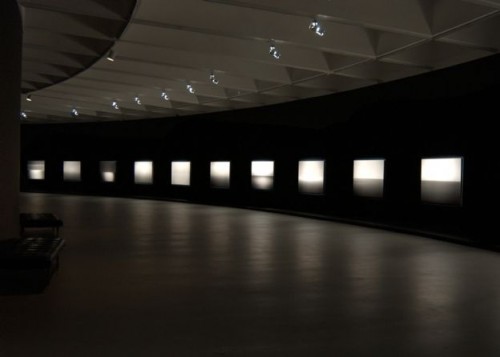
2006 Exhibition of Sugimoto’s work at the Hirshhorn Museum (Copyright: Hirshhorn Museum)
Congratulations to our client, Hiroshi Sugimoto. Last week, the Smithsonian Institution broke ground on its new sculpture garden designed by Sugimoto. In attendance was First Lady Jill Biden, in addition to prominent artists, including Jeff Koons and Laurie Anderson. Our client’s project for the Smithsonian is a massive undertaking, revitalizing the Hirshhorn Museum’s Sculpture Garden. The project is anticipated to take at least two years to complete. We had the honor of serving as legal counsel to Sugimoto on this project. We previously served as his legal counsel for the installation of his lobby design at the Hirshhorn Museum, in addition to other notable projects undertaken by the superbly talented artist, photographer, and architect.
We are privileged to have the opportunity to work with talented artists, like Hiroshi Sugimoto, to protect their intellectual property rights and further their artistic visions.
by Amineddoleh & Associates LLC | Nov 8, 2022 |
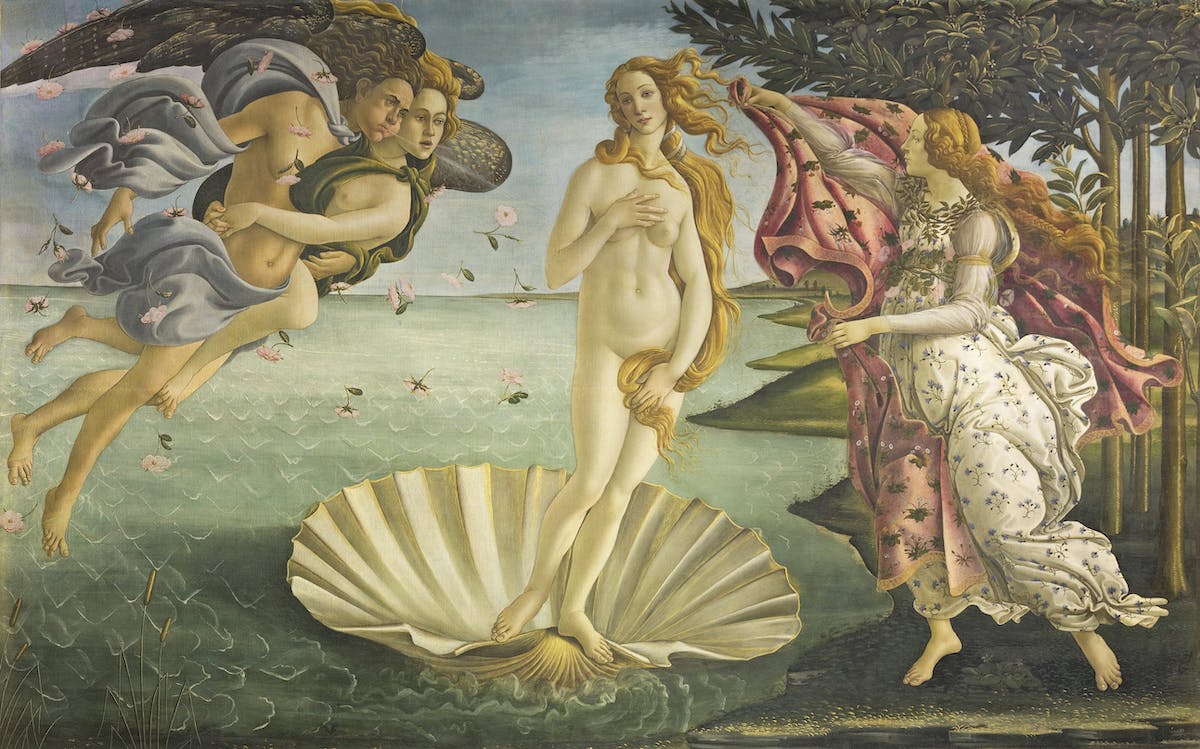 Last month Leila was quoted by The Art Newspaper and the Observer. With the Art Newspaper she discussed trends in the art market due to the pandemic and resulting lockdowns. In talks with the Observer, Leila spoke about international copyright laws and images in the public domain, including Sandro Botticelli’s “Birth of Venus,” painted over five centuries ago in 1486.
Last month Leila was quoted by The Art Newspaper and the Observer. With the Art Newspaper she discussed trends in the art market due to the pandemic and resulting lockdowns. In talks with the Observer, Leila spoke about international copyright laws and images in the public domain, including Sandro Botticelli’s “Birth of Venus,” painted over five centuries ago in 1486.
Today Leila was quoted in the NY Times about a recent NFT publicity stunt, the burning of a valuable drawing from Frida Kahlo’s personal diary. The destruction of the work involves copyright issues, fraud implications, and the violation of cultural patrimony laws. Read about the controversial act
here.
by Amineddoleh & Associates LLC | Oct 30, 2022 |
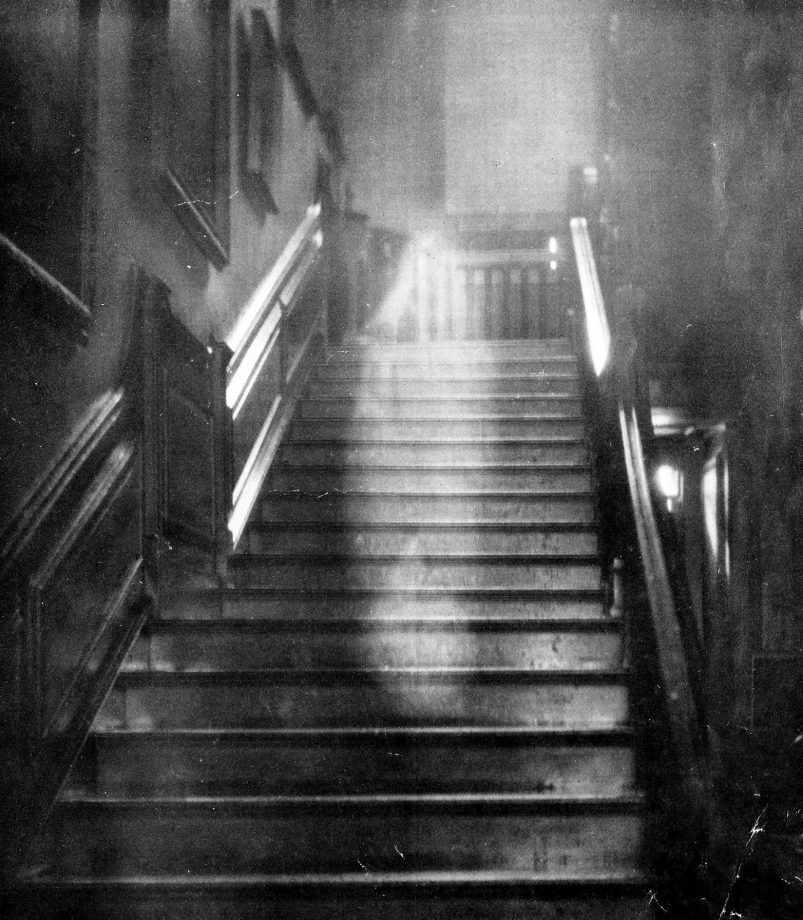
Famous ghost photograph of the Brown Lady of Raynham Hall, originally taken for Country Life (first published in December 1936).
Halloween is the night when ghosting means more than not texting back last night’s date. One look in the neighbor’s yard reveals sheeted spirits strung up between branches to give the home a festive glow. However, more and more often these days, reports are flying in of real-life spirits living in domestic dwellings. It’s a chilling prospect – with the real estate market as hot as it is today, moving into a new home with a poltergeist roommate is a possibility. An unknowing buyer might be buying a house that comes with spooky strings attached.
They’re HEEEERRREEEE!
As the New York Times reported last week, more and more people believe in ghosts and think they are cohabitating with an otherworldly roommate. In fact, a recent survey revealed that 65% of Gen Zers (people born between 1997 and 2012) thought their home was haunted, while only 35% of baby boomers (those born between 1946 and 1964) surveyed thought the same. Why are the number of believers growing? Perhaps it is due to more time spent at home during Covid lockdowns; with more individuals working remotely, people are hearing creeks and bumps they never noticed before. Alternatively, the rise in believers may be the result of the reports of the paranormal in the media or a decline in religious beliefs.
If the house-crashing ghost is a friendly one, like Casper, then perhaps the spirited company is an added bonus. In fact, a handful of families have even reported enjoying the company of certain ghostly presences, either because the spirits are benevolent or because the family senses that they may have been dearly departed relatives or friends. So how does someone live peacefully with a spiritual presence? Maybe he or she should adhere to the Korean tradition of memorializing ancestors (“jesa”) which incorporates awareness of and respect toward loved ones who have passed away.
“Who Ya Gonna Call?” (Your realtor?)
Conversely, an aggressive ghost bent on scaring and taunting homeowners is a different story. A reasonable family would not purchase a house that came with a very real and present threat to their lives, imagined or otherwise. Or worse, a house may come with a threatening stalker. This terrifying scenario finds its way into modern culture through shows like “The Watcher” on Netflix. In the show (creepily based on a true story), a couple purchases a home in New Jersey without knowing that danger accompanied the house. As it turns out, a stalker, who terrorized the family with threatening letters, was the free-gift-with-purchase. One would assume that if the couple had known of the stalker’s existence, they would have chosen to live somewhere else.
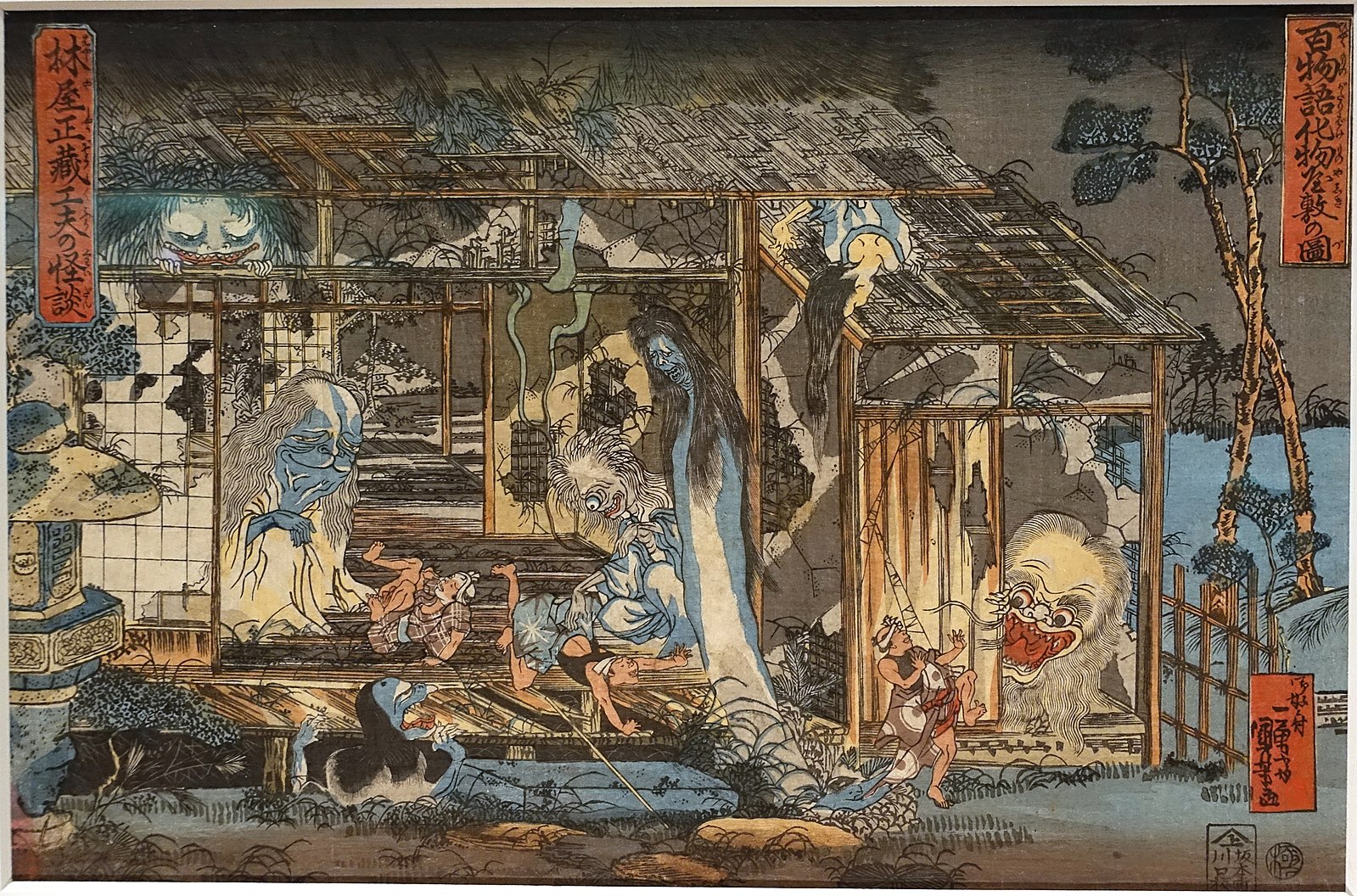
One Hundred Ghost Stories (Haunted House by Hayashiya Shozo), by Utagawa Kuniyoshi, Japan, Edo period, 1800s AD
Framed in this light, a paranormal danger that comes with the house could be considered a “defect.” If it is, then the seller may be required to disclose the defect, depend on the state’s law where the property sits. In New York, where real estate is selling faster than ever, must sellers reveal the presence of ghosts? This question made its way into state law with the entertaining opinion in Stambovsky v. Ackley, 169 A.D.2d 254 (N.Y. App. Div. 1991). In Stambovsky (known as “The Ghostbusters Case”), a couple purchased a house that the previous owner had been marketing as “officially haunted.” In fact, this verbose owner had given an interview to Reader’s Digest purporting the presence of poltergeists in the house (alliteratively entitled “Our Haunted House on the Hudson).
When the new buyers discovered this, they were spooked. They sought damages, or, in the alternative, recission of the contract. The appellate court enabled the scared buyers to rescind the contract, and the court actually incorporated ghost-themed turns of phrase into the official opinion. Phrases like “I am moved by the spirit of equity”, and, “the notion […] is a hobgoblin which should be exorcised from the body of legal precedent,” appear, along with quotations from Ghostbusters and Shakespeare’s Hamlet. If this case teaches its readers anything, it is that, as it turns out, judges can be fun at parties.
The holding turned on the fact that the seller had very publicly declared the house to be haunted (and, so, was legally estopped from claiming it was without paranormal activity). The Court (rather sassily) stated that, even though no reasonable means could be employed to ensure that the house was not haunted prior to sale, the seller (in this case) clearly took advantage of the buyer in “a most unnatural bargain.” The buyer was able to rescind the contract, thus setting the precedent for other New York buyers to argue the same remedy in future cases. New Jersey is the only other state with explicit requirements regarding paranormal activity, requiring a seller to disclose information about potential poltergeists, if asked. As for the rest of the nation? Buyers may want to familiarize themselves with the contract, because it’s often buyer beware when it comes to spirits. If you don’t properly review your contract, your purchase may haunt you for years to come.
Happy Halloween!


 When does the law protect fashion brands? And what is the cost to other artists? Our firm answered these questions in this posts inspired by the Fall 2022 Fashion Weeks taking place around the world. Prominent fashion designers have been known to incorporate logos of other brands into their designs, often as a part of social commentary. Even where artistry is the intent behind the repurposed logo, these designers face financially devastating intellectual property claims from major the brands and companies who own the rights to the logo. Our firm considered how to balance protecting consumers from consumer confusion with giving designers the artistic liberty to create fashion that sparks social commentary. Read more on our website.
When does the law protect fashion brands? And what is the cost to other artists? Our firm answered these questions in this posts inspired by the Fall 2022 Fashion Weeks taking place around the world. Prominent fashion designers have been known to incorporate logos of other brands into their designs, often as a part of social commentary. Even where artistry is the intent behind the repurposed logo, these designers face financially devastating intellectual property claims from major the brands and companies who own the rights to the logo. Our firm considered how to balance protecting consumers from consumer confusion with giving designers the artistic liberty to create fashion that sparks social commentary. Read more on our website.

 Auction Sales
Auction Sales

 Last month Leila was quoted by The Art Newspaper and the Observer. With the Art Newspaper she discussed
Last month Leila was quoted by The Art Newspaper and the Observer. With the Art Newspaper she discussed 
